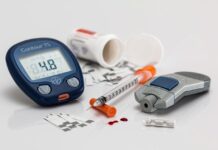Last Updated on February 19, 2021
Unfortunately, this condition has no known cure. However, researchers have noted a greater chance of the remission of symptoms if rheumatoid arthritis treatment starts at an early stage in its development. Treatment to fight the symptoms is usually done with meds known as DMARDs (Disease-Modifying Antirheumatic Drugs).
Although these drugs are generally safe and effective, they can have some serious side effects, like hearing loss or stomach pain.
This adds further importance to the early detection of the disease and gives you one more reason to be aware of its warning signs, which we will uncover next.
1. Dryness
It’s not unusual for people with rheumatoid arthritis to develop secondary Sjogren’s syndrome, another autoimmune disease in which the body attacks mucous membranes and glands that produce moisture. This leads to a decrease in tears and saliva production, which in turn causes dryness in both eyes and mouth. Fortunately, this variation of Sjogren’s disease is considerably less severe than its primary form. Although much rarer, other eye problems such as sclera may also occur. This inflammation in the eye causes blurry vision, pain, and redness.
2. Fatigue
Fatigue is a common early symptom among autoimmune diseases and it’s easy to understand why. Remember that the immune system thinks the organism is under attack, so the body channels a significant amount of energy towards the immune response. Evidently, this unbalance in distributing the available energy will make the patient feel weak and tired. Over an extended period, this increased fatigue can have a huge impact on your mental well-being and even lead to drastic mood changes and depression. This can end up in a snowball effect, with the physical and mental symptoms affecting each other. You can’t just ignore it! So make sure you explain all your symptoms to your doctor in details to help them make the right diagnosis.
3. Fragile bones
It is a well-known fact that osteoarthritis patients have weaker bones due to the loss of bone density. This makes them more susceptible to fractures. The exact same things happen to rheumatoid arthritis patients. According to a recent study made by researchers with the reputable Mayo Clinic, women under the age of 50 with rheumatoid arthritis are more than twice as likely to break a bone than women without that condition. Men are also at greater risk, but only when they get older. So, if a minor injury results in a broken bone, your doctor should consider any form of arthritis as a real possibility.































